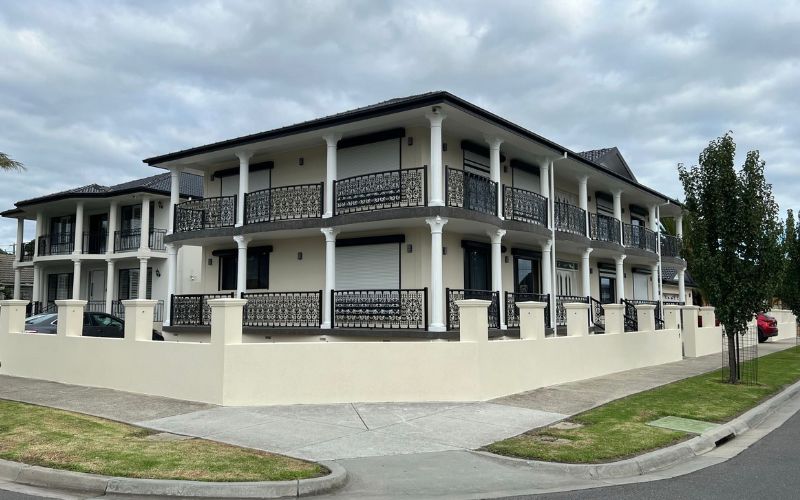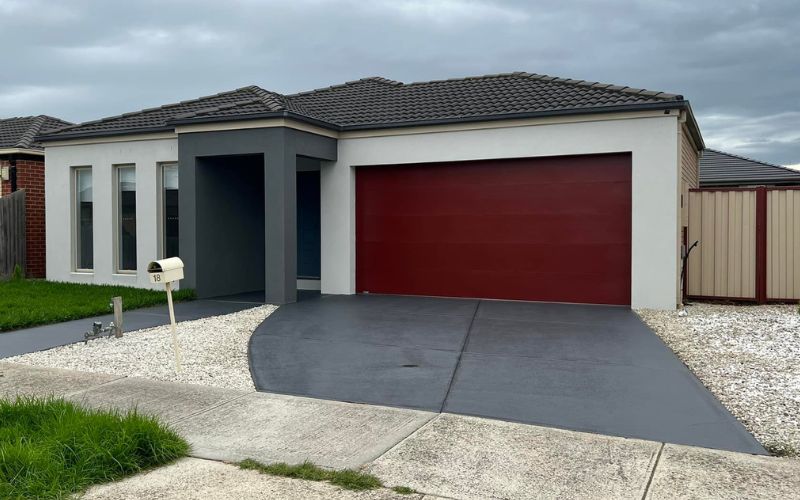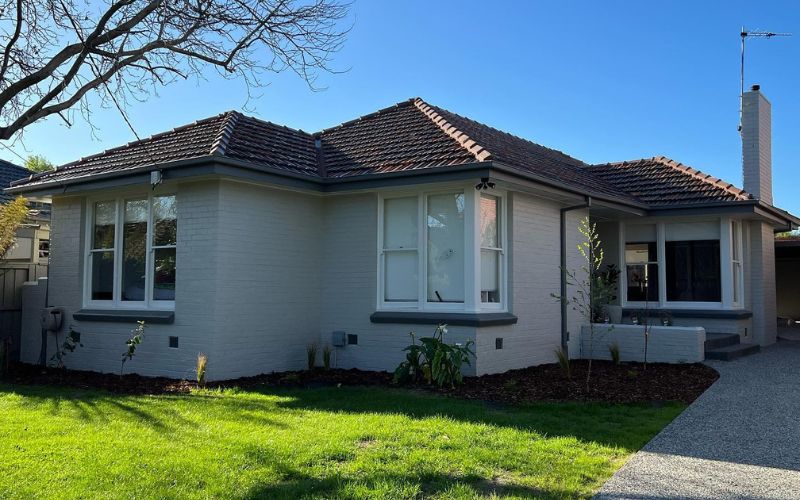Rendering and Texturing
In addition to its energy-efficient properties, acrylic render allows for aesthetic customisation. You can choose from a variety of colours and finishes to improve the overall appearance of your home. While aesthetics don’t directly impact energy efficiency, a refreshed exterior can increase property value and curb appeal.
What We Do

Home Renovations
Specialists in home renovations and complete makeovers

Interior/Exterior Painting
Embracing new design trends with painting

Render/Texture/Repairs
Modernising & protecting your cladding

Tiling/Hybrid Flooring
Giving your floors a facelift & durability
Get a Quote For Your Project
Rendering Improves Energy Efficiency
Acrylic rendering can contribute to improved energy efficiency in a house primarily through its impact on insulation and moisture control. Here’s a more in-depth explanation of how acrylic rendering can enhance the energy efficiency of a home:
- Improved Insulation: Acrylic render is applied as a thick, insulating layer to the exterior walls of a building. This layer acts as a barrier against heat transfer, helping to keep the indoor temperature more stable. In colder months, it reduces heat loss from the interior, and in warmer months, it prevents excessive heat from entering the building. This insulation effect can lead to reduced heating and cooling costs.
- Reduced Thermal Bridging: Thermal bridging occurs when there is a direct, conductive path for heat to transfer through a building’s structure. Acrylic render can cover gaps, cracks, and imperfections in the exterior walls, reducing thermal bridging and minimizing heat loss through these areas.
- Moisture Control: Acrylic render is water-resistant and forms a protective barrier against moisture infiltration. Moisture penetration into the walls can reduce the effectiveness of insulation materials and lead to mold growth. By preventing moisture ingress, acrylic rendering helps maintain the insulation’s integrity and the overall energy efficiency of the building.
- Sealing Air Leaks: Acrylic render can effectively seal small gaps and cracks in the exterior walls, preventing unwanted air leaks. These air leaks are often responsible for drafts and temperature fluctuations inside the house. By sealing these gaps, acrylic render helps maintain a more consistent indoor temperature.
- Reflective Properties: Some acrylic rendering products are formulated with reflective properties that can bounce solar radiation away from the building. This reduces the amount of heat absorbed by the walls during hot weather, helping to keep the interior cooler. Reflective acrylic renders are particularly useful in regions with intense sunlight and high temperatures.
- Durable and Long-Lasting: Acrylic render is known for its durability and resistance to weathering. A well-maintained acrylic rendering can last for many years, providing consistent energy efficiency benefits over an extended period.
It’s important to note that the energy efficiency benefits of acrylic rendering can vary depending on factors such as the quality of materials used, the thickness of the rendering layer, and the condition of the existing walls. To maximise the energy efficiency gains, it’s advisable to work with experienced professionals who can ensure that the acrylic rendering is applied correctly and that the underlying structure is properly prepared. Additionally, other energy-efficient measures, such as insulation in the attic and proper sealing of doors and windows, should be considered for a holistic approach to energy efficiency in your home.
Why Choose Acrylic Render
Acrylic render and cement render are both popular choices for exterior rendering in Australia, and each has its own set of benefits. Acrylic render is a lot more popular choice in the state of Victoria. The choice between them depends on your specific needs and preferences. Here are some of the benefits of using acrylic render over cement render in Australia:
- Faster Drying Time: Acrylic render typically dries faster than cement render. This can be advantageous in areas with high humidity or frequent rain, as it reduces the risk of washout and allows for quicker project completion.
- Flexibility: Acrylic render is more flexible than cement render. It can expand and contract with temperature variations without cracking, making it well-suited for Australia’s diverse climate, where temperatures can fluctuate significantly.
- Durability: Acrylic render is known for its durability and resistance to cracking and peeling. It can withstand harsh weather conditions, including UV radiation, which is important in Australia due to the strong sun.
- Colour Retention: Acrylic render tends to retain its color and finish over a more extended period, even in intense sunlight. This can reduce the need for frequent repainting or maintenance.
- Water Resistance: Acrylic render is inherently more water-resistant than cement render. It provides an effective barrier against moisture penetration, which is essential in regions with heavy rainfall or coastal exposure.
- Mildew and Algae Resistance: Acrylic render is less prone to the growth of mildew and algae, which can be common issues in areas with high humidity or near bodies of water.
- Ease of Application: Acrylic render is easier to work with and can be applied more smoothly and evenly than cement render. This can result in a more aesthetically pleasing finish.
- Adhesion: Acrylic render adheres well to various substrates, including brick, concrete, and foam. It provides a strong bond, which can contribute to the longevity of the rendering.
- Variety of Finishes: Acrylic render offers a wide range of texture and finish options, allowing you to achieve your desired aesthetic. This versatility is beneficial if you want to customize the appearance of your property.
- Low Maintenance: Acrylic render typically requires less maintenance than cement render. It is less prone to cracking and staining, reducing the need for frequent touch-ups.
Some acrylic renders are also formulated to be environmentally friendly, with low VOC (volatile organic compound) content and minimal environmental impact. While acrylic render offers these advantages, it’s essential to consider your specific project requirements, budget, and the condition of your existing surface when choosing between acrylic and cement render. Consulting with Anex Construction can help you make the best decision for your particular needs and location in Australia.
Latest Projects
Extensive Render Repairs/Repaint
This beautiful big home had very cracked render, especially the front pillar fence which had to be completely broke out and renewed. Extensive crack repairs to the house plus complete repaint from fences, walls, pillars, soffits and decorative railings.
Render Front Facade/Paint Driveway & Path
This house was modernised by cladding over brick with 3 coat render/texture in two-toned colours, complete repaint inside plus cleaning/painting driveway and pathway with Berger Jetdry rolled on in charcoal colour.
Painting Brick Home/Exterior Repaint & Fencing
This home was really given a facelift by filling/gapping and painting old bricks, repaint of all windows and doors, old soffits, gutters, fascias & pipes along with all new wooden fences along the whole 3 boundaries.



